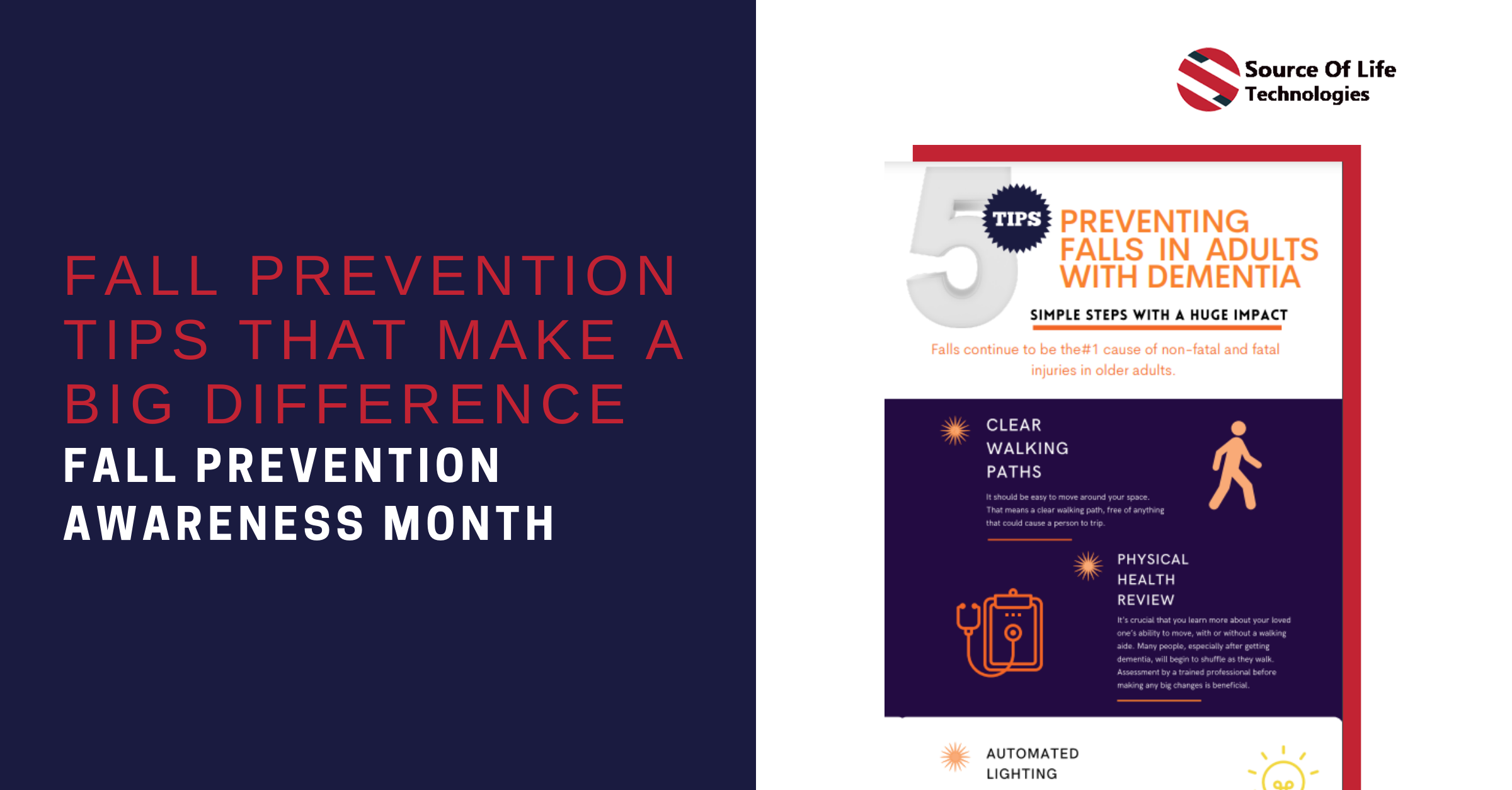Fall Prevention Tips That Make A Big Difference

Falls amongst older adults are far too common, costly, and preventable. They are the #1 cause of non-fatal and fatal injuries in older adults.
Fall safety is first and foremost about communication and risk analysis between ALL care providers, their families and loved ones. It is no surprise that the healthcare industry is booming with innovation. Today, the way care providers must handle fall prevention is quickly changing with new options coming into focus.
During fall prevention awareness week we are sharing our best tips for preventing falls in older adults shared in collaboration with Dementia By Day:
- Adequate lighting
Let’s face it; our eyesight changes and lessens as we age. Proper, well-lit spaces help to mitigate some of those eyesight challenges. If you are caring for someone at home, I highly recommend having lights on motion-sensors and keeping a couple lamps on overnight in case the individual wakes up and gets out of bed.
- Clear walking paths
It should be easy to get to the bathroom and back, and that means a clear walking path, free of anything that could cause a person to trip. End tables, standing lamps and even rugs can be a huge tripping hazard.
- Reviewing gait with a trained professional
It’s crucial that you learn more about your loved one’s ability to move, with or without a walking aide. Many people, especially after getting dementia, will begin to shuffle as they walk: instead of picking up their feet, they push them along the floor. It’s possible that the individual needs a walker or even a wheelchair, but they need to be assessed by a professional before any big changes can be made.
- No stairs
Stairs are incredibly dangerous for someone who has trouble walking. It’s so important that an older adult with a gait impairment be given the least amount of stairs to climb as possible. If stairs are completely unavoidable, they should be low in number and there must be a hand railing.
- Reviewing cognitive health with a trained professional
Dementia is a major cause of falls for older adults. Dementia is a group of symptoms caused by more than 100 different diseases. When someone is living with dementia, their ability to make safe choices is drastically impaired. This means that, even though you’ve written a note at the top of the stairs reminding your loved one not to use them, they will probably disregard your warning.
These are great tips, but when it comes down to it, fall prevention needs to be proactive—not reactive.
Just imagine if you could monitor, track, and address a person’s needs before a fall happens. This type of fall prevention initiative is available with Source of Life Technologies new product, Mat of Life: your modern fall prevention solution.
Falls in the senior community are far too common, costly, and preventable. Senior care fall strategies shouldn’t be reactive - they should be proactive. Just imagine if you could monitor, track, and address patient needs BEFORE a fall happens. This type of fall prevention initiative is available with Source of Life Technologies - Mat of Life - your modern fall prevention solution.
You can learn more about Mat of Life here.


